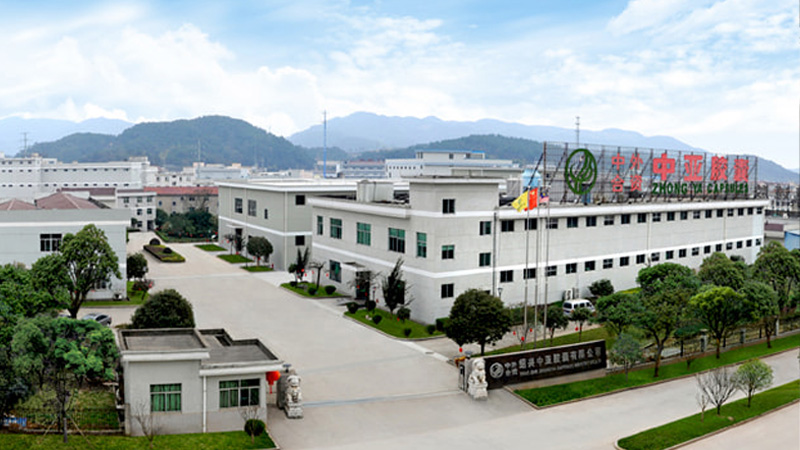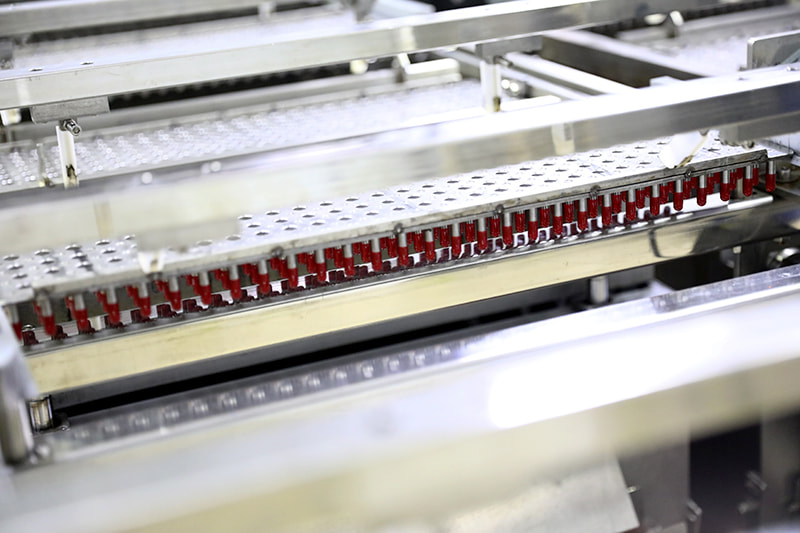Product Consultation
Your email address will not be published. Required fields are marked *


Plant polysaccharides as ingredients in plant hollow capsules

Plant polysaccharides, also known as plant polysaccharides, are glycans with a degree of polymerization of more than 10 produced by the metabolism of plant cells. Generally, plant polysaccharides are composed of more than 100 or even thousands of monosaccharide groups, and their properties are quite different from monosaccharides, such as sweetness and strong reducibility have disappeared. Plant polysaccharides are divided into two categories according to their functions in plants: one is the formation of plant supporting tissues, such as cellulose; the other is plant storage nutrients, which can be dissolved in hot water to form a colloidal solution, which can be released after enzymatic hydrolysis. Sugar is used to supply energy, such as starch, inulin, etc. Plant polysaccharides are compounds composed of many identical or different monosaccharides with α- or β-glycosidic bonds. They are commonly found in natural plants, including starch, cellulose, polysaccharides, pectins, and so on. Due to the wide range of sources of plant polysaccharides, the molecular composition and molecular weight of different kinds of plant polysaccharides are different. Some plant polysaccharides, such as starch, cellulose, and pectin, have long become an important part of people's daily life.
In China's traditional Chinese medicine theory, many plants are of the same origin as medicine and food, and they have medical and health care functions while serving as daily food. A large number of modern medical experiments have also proved that the consumption of certain plants has significant effects in the treatment of certain diseases: for example, pumpkin is the best food for diabetic patients, and has significant effects in the prevention and treatment of diabetes; Phyllanthus emblica juice can prevent The synthesis of strong carcinogen N-nitroso compounds in animals and humans.
The health function of plant polysaccharides
Scientific experimental studies have shown that many plant polysaccharides have biological activities, including immune regulation, anti-tumor, lowering blood sugar, lowering blood lipids, anti-radiation, anti-bacterial and anti-viral, and protecting the liver.
The immunomodulatory effect of plant polysaccharides
Due to the rapid development of modern medicine, cell biology and molecular biology, people's understanding of the immune system is getting deeper and deeper. Immune system disorders can lead to human aging and various diseases. The immunomodulatory effects of polysaccharides are mainly accomplished by activating macrophages, T and B lymphocytes, reticuloendothelial system, complement and promoting the production of interferons and interleukins. Studies have shown that jujube polysaccharides can increase, bamboo leaf polysaccharides, Gynostemma pentaphyllum polysaccharides, cordyceps polysaccharides, black soybean crude polysaccharides, fig polysaccharides, hericium edulis polysaccharides, Chinese kiwi fruit polysaccharides, atractylodes polysaccharides, wind-proof polysaccharides, rehmannia glutinosa polysaccharides, medlar polysaccharides, helix Algae polysaccharides, Eucommia ulmoides polysaccharides, Ligustrum lucidum polysaccharides, etc. all have the function of improving the body's immunity. Among the fungus plant polysaccharides, Yunzhi polysaccharide, Ganoderma lucidum polysaccharide, Poria polysaccharide, Tremella polysaccharide, and lentinan have been used clinically to enhance cellular immune function.
Anti-tumor effects of plant polysaccharides
Current studies believe that plant polysaccharides are mainly used to enhance the immune function of the body to achieve the purpose of killing tumor cells, that is, the anti-cancer effect passes through the host-mediated effect to enhance the body's non-specific and specific immune effects, rather than directly killing tumor cells. It is also related to the influence of polysaccharides on cell biochemical metabolism, inhibition of tumor cell cycle and inhibition of SOD activity in tumor tissues. Lycium barbarum polysaccharide can enhance the function of the anti-cancer immune surveillance system; kelp polysaccharide has a significant inhibitory effect on tumor-bearing H22 mice, and its tumor inhibition rate is as high as 43.5%; Grifola frondosa polysaccharide can significantly inhibit tumor growth and enhance mice Immune Function. Other polysaccharides such as spirulina polysaccharide, tremella polysaccharide, ginseng polysaccharide, lentinan, polyporus polysaccharide, wolfberry polysaccharide, astragalus polysaccharide, Ganoderma lucidum polysaccharide, bamboo leaf polysaccharide, Flammulina velutipes polysaccharide, Cordyceps polysaccharide have anti-tumor effects.
The hypoglycemic and hypolipidemic effects of plant polysaccharides
Under normal circumstances, the synthesis and decomposition of lipids in the human body maintain a dynamic balance. Once the balance is disrupted, the increase in blood lipids will damage the arterial intima and cause atherosclerosis, thereby inducing cardiovascular and cerebrovascular diseases. Reducing blood lipid levels is of great significance for the prevention and treatment of cardiovascular diseases. According to reports, pumpkin polysaccharide has the effect of lowering blood sugar and lowering blood lipids, and its effect on the prevention and treatment of diabetes has been confirmed. Animal experiments show that pumpkin polysaccharide is an ideal dietetic agent that can improve lipid metabolism. Black fungus polysaccharide can significantly reduce the cholesterol in the blood of mice; kelp polysaccharide can significantly reduce blood sugar and urea nitrogen in diabetic mice, and has a repair effect on pancreatic islet damage. Tremella polysaccharides, tea polysaccharides, and konjac polysaccharides can lower blood sugar and blood lipids. In addition, there are guava polysaccharides, ginseng polysaccharides, aconitum polysaccharides, anemarrhena polysaccharides, atractylodes polysaccharides, coix seed polysaccharides, yam polysaccharides, ephedra polysaccharides, acanthopanax senticosus polysaccharides, comfrey polysaccharides, mulberry bark polysaccharides , Rice Root Polysaccharide, Rice Bran Polysaccharide, Sugar Cane Polysaccharide, Astragalus Polysaccharide, Ganoderma Polysaccharide, Laver Polysaccharide, Laminaria Polysaccharide, Ophiopogon Polysaccharide, Grifola Polysaccharide, Black Fungus Polysaccharide
Anti-radiation effect of plant polysaccharides
In real life, with the modernization of science and technology and people's lives, electronic appliances are becoming more and more common, and more and more people are exposed to radiation. In particular, radiation damage caused by tumor patients and occupational exposed personnel receiving radiotherapy has received increasing attention. Animal experiments show that Astragalus polysaccharide, Ginseng polysaccharide, Angelica polysaccharide, Bupleurum polysaccharide, Ganoderma lucidum polysaccharide, Lycium barbarum polysaccharide, Polygonatum polysaccharide, Cordyceps polysaccharide, Aloe polysaccharide, Huang mushroom polysaccharide, Spirulina polysaccharide, Acanthopanax senticosus polysaccharide, Yunzhi polysaccharide, Fungus polysaccharides can protect mice from radiation damage. In fact, polysaccharides derived from plants, animals or microorganisms have certain anti-radiation effects. The mechanism is generally believed that polysaccharides enhance the body's tolerance to radiation by strengthening the hematopoietic system and activating phagocytes.
Antibacterial and antiviral effects of plant polysaccharides
A large number of studies have shown that many polysaccharides have inhibitory effects on bacteria and viruses, such as HIV, herpes simplex virus, influenza virus, and cystic gastritis virus. Experiments have shown that Ginkgo biloba extracellular polysaccharides and Ginkgo biloba polysaccharides can significantly inhibit the ear swelling and capillary permeability of mice caused by inflammatory agents, indicating that they have anti-inflammatory effects; purple-based polysaccharides can not only inhibit leather such as Staphylococcus aureus Lan-positive bacteria also have an inhibitory effect on gram-negative bacteria such as Sarcina luteus. The antiviral mechanism of most polysaccharides is to inhibit the adsorption of viruses to cells, which may be related to the mechanical or chemical competition of polysaccharide macromolecules for the binding sites of viruses and cells. Therefore, using the antibacterial effect of plant polysaccharides and using plant polysaccharides as an ingredient in food can not only be antiseptic, but also add value to the product. In China, research on the use of plant polysaccharides for anti-AIDS has pointed out a direction for the development of alternative traditional antiviral drugs that are expensive and have large side effects.
Plant polysaccharides and anti-aging
In the traditional Chinese medicine anti-aging ancient prescriptions, basically botanicals are the mainstay, and the higher content ingredients are mostly carbohydrates. Modern science puts forward the theory of free radicals of aging. Its basic point is: under normal circumstances, the production and disappearance of free radicals in the body are in a dynamic equilibrium state, that is, free radicals are constantly being produced and eliminated to maintain the body. However, when the body ages, the amount of free radicals produced is relatively large, and the body’s ability to scavenge free radicals is reduced. The excess free radicals attack the body’s tissues, causing disorders and obstacles to the body’s functions, which leads to aging. Symptoms. Studies have shown that oil tangerine polysaccharides can affect the activity of free radicals, and its activity is related to the amount of polysaccharides. Cistanche Polysaccharides can delay skin aging, increase collagen fiber content, improve skin elasticity, activate superoxide dismutase, and reduce lipofuscin accumulation in the body. Black fungus polysaccharide has the functions of scavenging superoxide anions, anti-oxidation and protecting mitochondria. The anti-aging effect of Lycium barbarum polysaccharides is more prominent, and the promotion and regulation of various physiological and biochemical functions of the body are more comprehensive. In addition, the polysaccharides of Polygonum multiflorum, ginseng, astragalus, and Ligustrum lucidum all have a certain degree of anti-aging effect.
Hepatoprotective effects of plant polysaccharides
Studies have shown that the crude polysaccharides of Schisandra chinensis have liver protection and can reduce liver damage in mice; Lycium barbarum polysaccharides can reduce the content of malondialdehyde in liver tissue. Both polysaccharides can increase the content of liver glycogen, thereby increasing the body's energy. Reserves are beneficial to resist the damage of harmful substances to the liver.
Other functions of plant polysaccharides
Black fungus polysaccharide and white fungus polysaccharide can significantly prolong the formation time of specific thrombus and fibrin plug, indicating that it has antithrombotic effect. Tea polysaccharides also have anticoagulant and antithrombotic effects. Japanese patent reports that the salvia miltiorrhiza polysaccharide isolated from salvia miltiorrhiza can inhibit the secretion of urinary protein and slow down the symptoms of liver and kidney disease. It can be made into oral or intramuscular injection preparations to reduce the adverse effects caused by long-term use of steroids such as dipyridamole or platelet inhibitors. reaction.
Your email address will not be published. Required fields are marked *
If you would like to learn more about our products, please feel free to contact us and we will do our to assist you.
No.1 Tianzhu 3rd Road, Dufu Town, Xinchang County, Zhejiang Province
86-575 8606 0065
86-159 8825 2009
+86 159 8825 2009
+1 380 215 7432
